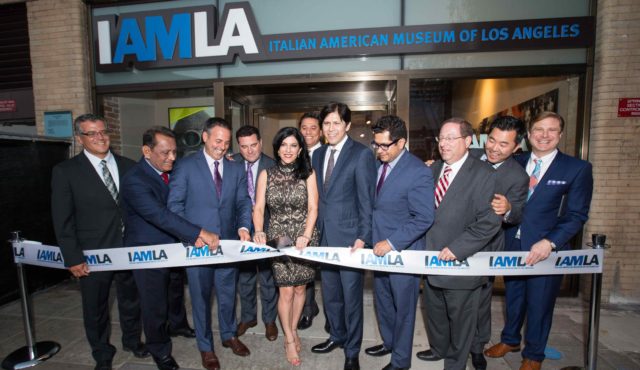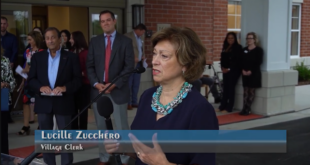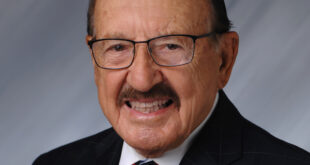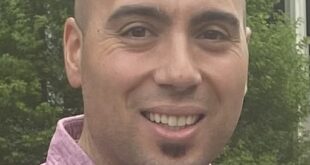 As executive director of the Italian American Museum of Los Angeles, Marianna Gatto has made it her life’s work to celebrate L.A.’s rich and largely unknown Italian legacy.
As executive director of the Italian American Museum of Los Angeles, Marianna Gatto has made it her life’s work to celebrate L.A.’s rich and largely unknown Italian legacy.
Los Angeles is all too well known for its Hollywood heavies, rock stars and thriving Latino culture. But as Marianna Gatto will gladly tell you, Italian roots run rich and deep there in ways unlike any other American metropolis.
Gatto, who serves as the executive director of the Italian American Museum of Los Angeles, dreamt of forming the institution that she now runs ever since first setting foot in an abandoned Italian gathering place while growing up. She went on to restore the hall and transform it into a vibrant celebration of L.A.’s largely unknown Italian history, culture and everyday life. A soon-to-be-released book by Angel City Press will highlight Gatto’s recent research.
Lou&A spoke with Gatto about the Italian heritage that came to define her, even as her Italian-American paesani came to define the West Coast city they called home.
Lou&A: Tell us about your Italian lineage and upbringing.
Marianna Gatto: I’m a lifelong resident of Los Angeles and currently reside in Los Feliz, a neighborhood near Hollywood. My family hails from the villages of Lago, in the province of Cosenza, Calabria, and Lucca Sicula, in Agrigento, Sicily. On their arrival in the United States, the Sicilian side settled in Louisiana briefly before continuing west to Pueblo, a southern Colorado town known as the “Pittsburgh of the West.” The Calabrese side, meanwhile, first lived in Pittsburgh.
Los Angeles has been my family’s home since 1947. My parents were professionals and my family was considered more “American” than those of my peers, whose parents spoke with pronounced accents. Nonetheless, there was a deeply rooted connection to our heritage. What I came to define as my Italianità stems largely from my father’s and grandfather’s teachings. Hard work, discipline, sobriety and respect for one’s elders — along with a commitment to family, faith and ecology, and a reverence for history, creativity and the arts — were among the values intrinsically linked to our ethnic identity. My family’s Italianità shined especially bright during the holidays, when my father resurrected the recipes his mother had handwritten shortly before her death.
L&A: Then you found a deeper connection to your Italian roots. Tell us about that.
MG: Growing up in Los Angeles during the 1980s, there was little indication that the city had been home to an Italian community for more than 150 years. The history remained unwritten, and I grew up believing that my family’s piece of the puzzle never seemed to fit. Then in the mid-1990s, I learned about a building on the edge of downtown known as the Italian Hall. It had served as a community gathering place for nearly half a century and despite its deteriorated condition, the first time I walked in was a very emotional experience. You could feel the history that took place within those walls. I envisioned it one day becoming a museum about the Italian community and said to myself, “I want to be the director of this place.”
Using the work of historian Gloria Ricci Lothrop as a foundation, I continued to research the Italians of greater Los Angeles and later accepted a position with the city, working with the foundation in charge of restoring and redeveloping the Italian Hall. In 2010, I became the director of the Italian American Museum of Los Angeles, and with the support of our incredibly dedicated board, our generous donors and the city, we became the award-winning museum we are today.
L&A: How is the Italian-American story in Los Angeles different from the more well-known ones in, say, New York, Chicago or Philadelphia?
MG: The story of Southern California’s Italians illustrates the truly varied nature of the Italian diaspora. Italians began settling in the region in the early 1800s. When they first arrived, Southern California was part of Mexico and sharing what can be likened to a common “Latin” culture — similar languages, the Catholic faith. Italians faced less prejudice during this era. Many of the settlers were also Northern Italians whose “whiteness” also helped ensure their success.
Many people do not realize that Los Angeles was once home to thriving Little Italy, and the earliest was at the plaza, where the museum is located. Present-day Chinatown and Lincoln Heights, where Frank Capra was raised, were the largest neighborhoods. Today, St. Peter’s Italian Church, Casa Italiana and the San Antonio Winery are among the lone reminders of these enclaves’ existence.
L&A: What have been some of the major challenges you’ve faced with the museum and how are you moving to tackle those?
MG: The early years of the museum project coincided with the nation’s economic crisis, and fundraising was challenging to say the very least. Reopening our doors as a vibrant museum and cultural center was a game changer. Only a fraction of our visitors are of Italian extraction, which makes the IAMLA uniquely positioned to convey our history and heritage to diverse audiences largely unaware of the Italian struggles and successes in our nation. The IAMLA is in the process of establishing an endowment, which will make our planning and operations more intelligent and efficient.
L&A: When you look at the path ahead — both for you and the museum in general — what are some things you’d love to accomplish and why?
MG: Thanks to a budget allocation from the State of California, a request made by California State Sen. Anthony Portantino, the IAMLA will soon bring its permanent collection online. The IAMLA’s permanent exhibition is already accessible online through the museum’s partnership with Google. This project is something I have wanted to accomplish for many years now. The IAMLA’s expansion is also in the works. In the coming years, we will resurrect a presently vacant portion of the building that originally housed an elegant Italian saloon and create a culinary educational center.
L&A: There is always the issue that as generations pass, Italians will assimilate further and further into American life until they identify much more as Americans. How does that add poignancy and importance to the work you are doing?
MG: There are times when I look at images of immigrants arriving at Ellis Island in the early 1900s and it occurs to me that the Italian Americans in their teens and 20s today likely have no concept of who that relative waiting in line at the Port of New York even was. That being said, we are noticing an interesting phenomenon among younger generations of Italian Americans. They’re interested in discovering the history that their parents or grandparents didn’t know or wished not to speak of. They’re interested in returning to their ancestral villages, having a DNA test and discovering their piece of the American mosaic.
L&A: What aspects of your work and mission do you find most rewarding?
MG: Having dedicated more than 15 years to researching the Italian community of Los Angeles, I find it especially rewarding to uncover new information and knowledge. And it’s truly an honor being entrusted to preserve the community’s history and memory — and contributing to scholarship in the field of Italian-American history.
The above appears in the January 2019 issue of the print version of Fra Noi. Our gorgeous, monthly magazine contains a veritable feast of news and views, profiles and features, entertainment and culture. To subscribe, click here.
 Fra Noi Embrace Your Inner Italian
Fra Noi Embrace Your Inner Italian







